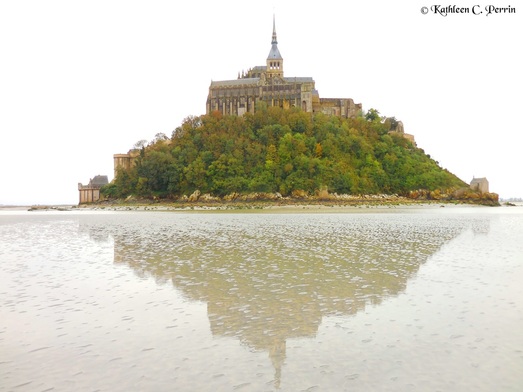
My husband and I just got back from France, where I did some final research for BOOK II in The Watchmen Saga. More about that to come in the next few weeks. And of course, we made our tri-annual pilgrimage to Mont Saint Michel, as all faithful Miquelots must do. But this visit was particularly amazing. On a chilly and overcast afternoon with none of the ubiquitous tourists in sight, we hired a guide to take us on a walking tour of the Bay of Mont Saint Michel. Because of the hazardous quicksand in the bay, which in French is accurately labeled as les sables mouvants (literally translated as "the moving sands"), and because of the constantly flowing and ebbing tide (which can reach a difference of 50 feet in height between low and high tide), it is highly dangerous to venture out into the bay without a professional guide. That day, in the entire 113,000-acre bay, there were just the five of us, two couples and our guide. Our own private "Bay Walk!" Since we couldn't get Nicolas le Breton as our guide, we had to be content with Guillaume le Normand, in green below! My husband is in navy blue. And check out the fabulous image above of the mount reflected into the water, which can only be obtained from the bay. This is looking to the south, and you can see the wooded north side of the island below the abbey, which has no structures on it.
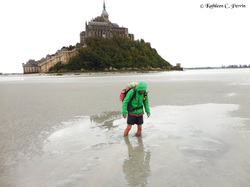
Guillaume would not allow us to go in front of him. He would walk a little ways, test out the area, and then have us follow in his steps. He also taught us just exactly what "moving sands" really are. If you stand in place for any length of time, or stomp around in a circle, you suddenly feel the sand instantly "liquefy." The water seeps up from below and what you thought was a solid surface quickly turns into
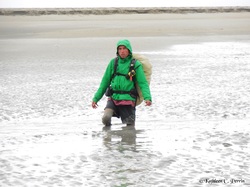
a moving surface, and the seawater begins to seep up from underneath. It's like walking on a water bed with water leaking out. These three photos were taken in the same place, and show how quickly the seemingly firm, dry surface can turn into a pool of water, and then into a sink hole! Guillaume also showed us how the seagulls have learned to dig for cockles by using these very properties of the sand. They stand in place and start stomping, and when the little pools of water seep up, so do the buried cockles, which the seagulls then open with their beaks. They have literally learned how to use the quicksand to their advantage. Fascinating. I learned an important lesson by watching them. Regardless of the hazards (trials or challenges) in our lives, we need to look for the positive in them, so that those hazards can actually turn into learning opportunities and even blessings.
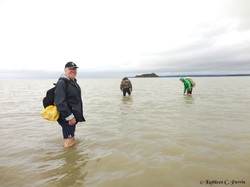
We also learned that even during low tide, you will get wet when you go on a bay walk. Four separate rivers constantly flow into the bay, (Couesnon, Selune, See and Guintre) and even when the tide is out, the rivers are flowing. We crossed all four of them to get to Tombelaine, with the water coming all the way up to our thighs at some points. Even through the rivers, Guillaume went first and we
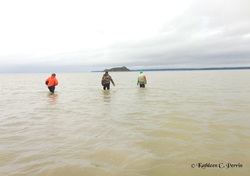
followed after he had tested out the waters (and sands). Below is a shot of Tombelaine Island, which in itself has a colorful history. The only way to get to Tombelaine is by walking to it either from the mainland or from the Mont. It is about 3.5 kilometers (2.2) miles from Mont Saint Michel. The name of the island comes from the legend that it is the tomb of Princess Helene, daughter of King
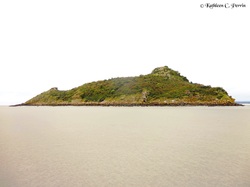
Hoel of Brittany, who died of a broken heart when she was not allowed to marry the man she loved from a rival family (the Breton version of Romeo and Juliette)! During the early Middle Ages, religious hermits lived on Tombelaine, then in 1137, Bernard du Bec founded a priory on the island, and for a time it became a place of pilgrimage like its more famous sister island. At the height of the power of Mont Saint Michel's Benedictine Abbey, the abbot used the island to exile disruptive or disobedient monks. During The Hundred Years' War, the English took possession of the island and built a fortress from which to launch attacks against the Mont. Later, in the 16th-century French wars of religion, the leader of the Huguenot Army, Gabriel Comte de Montgomery, occupied the island. In 1666, the island's fortifications were destroyed so they could never be used by the English again. Today, there are just a few ruins left and the island is a government-owned bird sanctuary. We climbed to the top of Tombelaine (with bare feet), and honestly, it is more of a mosquito sanctuary than a bird sanctuary! I must have had 40 bites on my exposed legs by the time we left. Just a few vestiges of the old fortress remain on the small granite island (see below), which measures 250 m x 150 m and is 45 m high.
But Tombelaine has a great unobstructed view of Mont Saint Michel. The first photo below is taken from the island's shore, and the second is taken from its summit. It took us three and a half hours to complete the round trip walk, and we were cold and muddy when we finished, but it was well worth it. What a fabulous day.
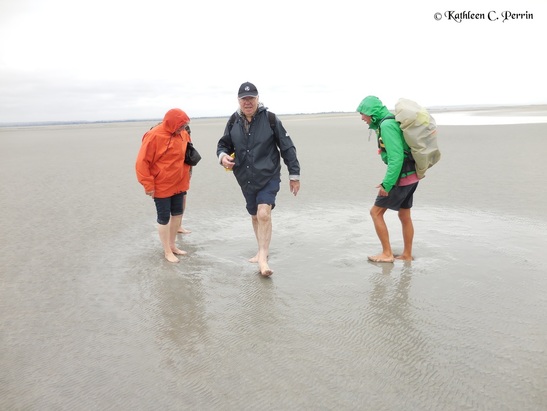
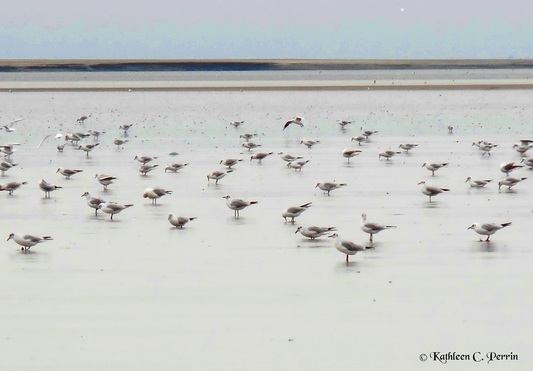
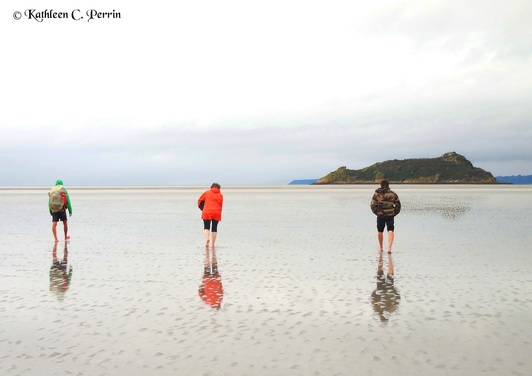
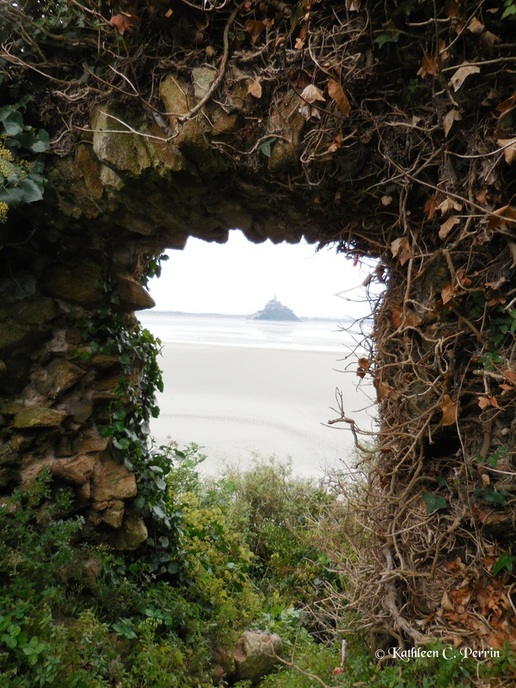
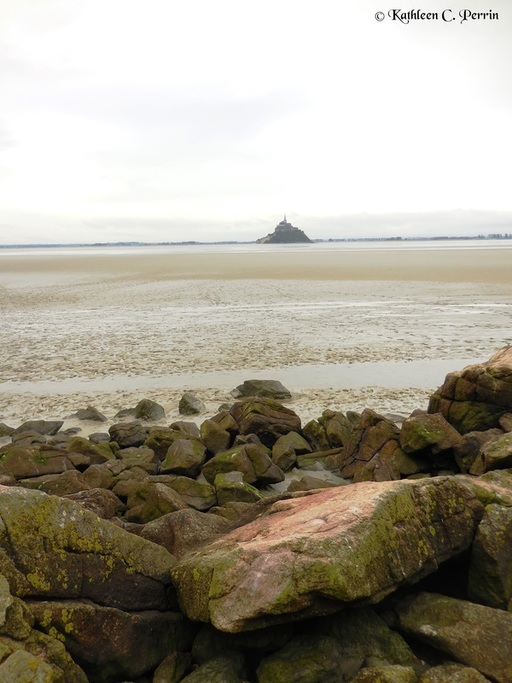
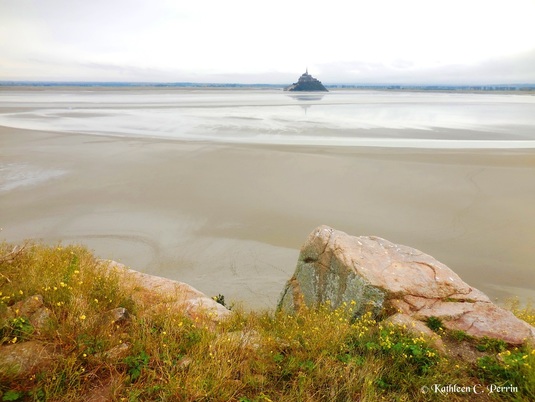
 RSS Feed
RSS Feed